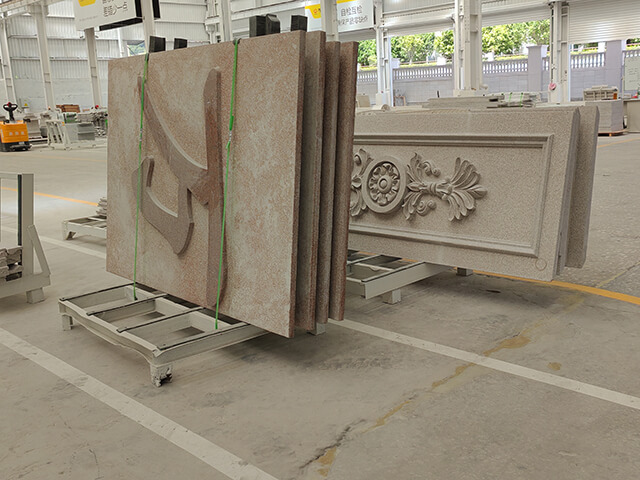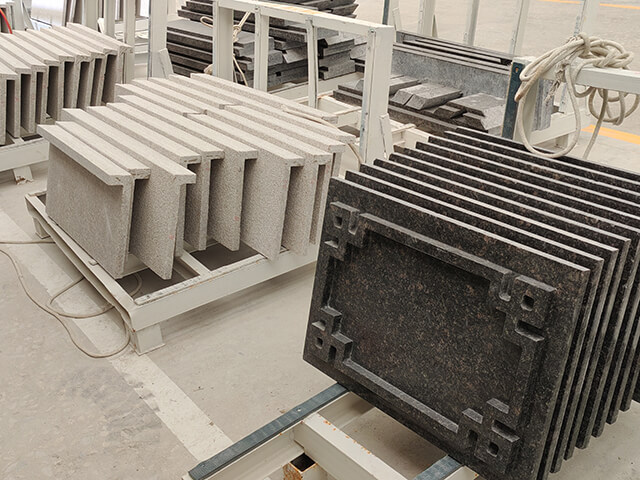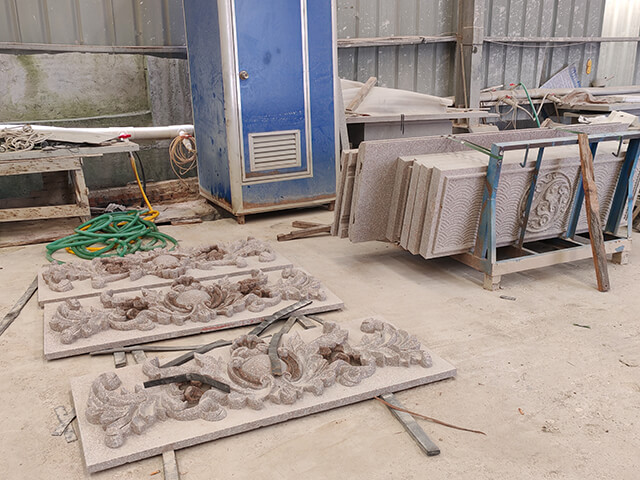Author:Dafon Kerbstone Machine FROM:Stone Machine Manufacturer TIME:2024-07-24
Engraving stones has traditionally been a labor-intensive process requiring skilled artisans and significant time. However, the advent of Computer Numerical Control (CNC) machines has revolutionized this field, making stone engraving more efficient, precise, and versatile. CNC machines, guided by computer programs, can execute intricate designs and consistent patterns, raising the question: can a CNC machine engrave stones? The answer is a resounding yes. Here's how and why CNC machines are an excellent choice for stone engraving.
A CNC machine is a computerized tool that uses programmed instructions to control the movement of its cutting tools. These machines are capable of executing complex designs with high precision, making them invaluable in various industries, from aerospace to artistry. When it comes to stone engraving, CNC machines use specialized tools and techniques to carve intricate patterns and designs into hard materials like granite, marble, and other types of stone.
CNC machines can engrave a wide variety of stones, including:
Granite: Known for its hardness and durability, granite is commonly used for countertops, memorials, and architectural elements. CNC machines can handle granite's density and produce sharp, detailed engravings.
Marble: Softer than granite, marble's fine grain allows for intricate detailing, making it a popular choice for sculptures and decorative elements. CNC machines can achieve fine lines and detailed patterns on marble surfaces.
Sandstone and Limestone: These stones are softer and easier to carve, making them ideal for architectural details and signage. CNC machines can produce smooth and detailed engravings on these stones without causing significant wear on the tools.
Slate: Often used for roofing and flooring, slate can be engraved to create unique decorative elements. CNC machines can handle slate's layered structure to produce clean, crisp engravings.

CNC machines engrave stones through a process that involves the following steps:
Design Creation: The first step in stone engraving with a CNC machine is creating a digital design. This design can be made using CAD (Computer-Aided Design) software, which allows for precise and detailed patterns to be crafted.
Tool Selection: Stone engraving requires specific tools, typically diamond-tipped, to handle the hardness and abrasiveness of the material. These tools are mounted onto the CNC machine.
Programming: The digital design is then converted into a set of instructions that the CNC machine can follow. This is done through CAM (Computer-Aided Manufacturing) software, which generates the code necessary for the CNC machine to execute the engraving.
Engraving Process: Once programmed, the CNC machine starts the engraving process. The machine's spindle moves the engraving tool according to the programmed path, carving the design into the stone with high precision.
Finishing: After the engraving is complete, the stone may require additional finishing processes, such as polishing, to achieve the desired look.

Precision and Consistency: CNC machines can reproduce the exact design multiple times with impeccable accuracy. This consistency is essential for projects requiring uniformity, such as tiles, plaques, or repeating decorative elements.
Complex Designs: The complexity of designs achievable with CNC machines is unparalleled. Intricate patterns, detailed text, and three-dimensional reliefs can be easily created, expanding the creative possibilities for stone engraving.
Efficiency: CNC machines significantly reduce the time required for stone engraving. What might take a craftsman days or weeks can often be accomplished in hours, improving productivity and reducing costs.
Automation and Scalability: CNC machines can run unattended once programmed, allowing for continuous operation and large-scale production. This automation makes CNC engraving suitable for both small workshops and large manufacturing facilities.
Versatility: Beyond engraving, CNC machines can perform various tasks such as cutting, drilling, and shaping stones. This multifunctionality adds value and flexibility to the investment in a CNC machine.

The applications of CNC stone engraving are vast and varied:
Monuments and Memorials: CNC machines can engrave detailed text and images onto tombstones and memorial plaques, creating lasting tributes.
Architectural Elements: Engraving intricate designs into stone panels, columns, and other architectural features adds elegance and sophistication to buildings.
Decorative Art: Artists and designers use CNC machines to create stunning stone sculptures and artworks with intricate details.
Signage: CNC engraving is used to produce durable and attractive stone signs for businesses, parks, and public spaces.
CNC machines have indeed proven their capability to engrave stones, transforming the way we approach stone craftsmanship. Their precision, efficiency, and versatility make them an invaluable tool in various industries. Whether for creating beautiful memorials, enhancing architectural designs, or producing intricate art, CNC stone engraving stands as a testament to the power of modern technology in transforming age-old materials.
By leveraging CNC technology, craftsmen and manufacturers can achieve new heights of creativity and productivity, ensuring that stone, one of the oldest building materials known to humanity, continues to be a cornerstone of innovation and artistry.